- The Hidden Life of the Herpes Virus
- What Is Viral Latency? Modern Medicine’s Understanding
- Ayurvedic Diagnosis of Latent Viral Infections
- Ayurveda’s Protocol for Eradicating Viral Latency- A Scientific Roadmap
- Scientific Validation- Modern Studies Supporting Ayurvedic Principles
- Clinical Insights
- Why Targeting Latency is the Only Real Cure
- References
Curing Herpes at the Root-Ayurveda vs Symptom Management- Herpes simplex virus (HSV) is one of the most widespread viral infections in the world, yet it remains deeply misunderstood. More than four billion people globally carry either HSV-1 or HSV-2, often without obvious symptoms. Despite its prevalence, modern medicine offers no true cure. Instead, the focus remains on temporary symptom control through antiviral drugs like acyclovir, leaving the root of the infection untouched.
The real challenge with herpes lies not in its visible outbreaks, but in its hidden nature. After the initial infection, the virus retreats into the nerve ganglia, a specialized region of the nervous system. There it remains dormant, invisible to standard blood tests, inaccessible to the immune system, and untouched by antiviral drugs. This state of viral dormancy is known as latency.
Latency is what makes herpes a lifelong burden. Even when outward symptoms are absent, the virus silently persists, waiting for a trigger such as stress, hormonal changes, or immune suppression to reactivate and cause new outbreaks. Modern medicine acknowledges this behavior but has no tools to eliminate latent reservoirs. Patients are offered lifelong antiviral suppression rather than true eradication.
Ayurveda, however, views herpes through a completely different lens. In Ayurvedic science, hidden disease seeds are known as Beejabhava Doshas—subtle, dormant imprints that, under the right conditions, manifest into active disease. Ayurveda emphasizes not just treating visible symptoms but correcting the underlying terrain that allows such latent imbalances to survive.
This blog explores why understanding viral latency is critical to achieving permanent herpes cure, how modern medicine fails to address it, and why Ayurveda’s time-tested strategies offer a scientifically validated path to true viral eradication.
Unlike symptomatic management, the Ayurvedic approach seeks to uncover, cleanse, and permanently dismantle the hidden viral strongholds—offering new hope to millions living under the shadow of herpes.
Herpes simplex virus (HSV) exhibits a biological behavior that challenges traditional ideas of infection and immunity. After an individual is exposed to HSV-1 or HSV-2, the virus does not remain confined to surface tissues. Instead, it quickly invades the nervous system, establishing lifelong residence within specific nerve clusters known as dorsal root ganglia.
Once inside the ganglia, HSV becomes latent. During latency, the virus exists in a dormant state within the host’s neurons. It does not actively replicate or cause noticeable symptoms. This dormancy allows the virus to evade immune detection. In the latent phase, even the most sensitive diagnostic tools often fail to detect its presence.
Modern medicine describes latency as a dynamic equilibrium. Small amounts of viral genetic material remain in nerve cells without producing infectious virus particles. However, when the body’s immune surveillance is weakened—through stress, fatigue, illness, hormonal changes, or trauma—the virus can reactivate. It then travels along nerve fibers to the skin or mucous membranes, causing an outbreak.
The biological mechanisms underlying latency involve complex interactions between viral proteins and host cellular pathways. Specific HSV proteins, such as latency-associated transcript (LAT), help maintain dormancy by suppressing viral replication genes. These mechanisms allow HSV to persist silently for decades within the human body.
Despite this knowledge, modern medical treatment focuses almost exclusively on managing the active phase of the virus. Drugs like acyclovir (chemical formula C8H11N5O3) inhibit viral DNA polymerase, reducing the severity and duration of active outbreaks. However, these medications have no effect on the dormant virus hidden in the ganglia.
This therapeutic limitation explains why, even after years of antiviral therapy, patients continue to experience periodic flare-ups. It also underscores why herpes is categorized as a chronic, incurable infection in conventional medicine.
Diagnostic practices further illustrate the challenge. Standard antibody tests, such as HSV IgG and IgM, measure the immune response to the virus but cannot differentiate between active and latent infection. A positive HSV IgG simply indicates exposure; it does not reveal whether the virus is currently replicating or dormant. Polymerase chain reaction (PCR) testing can detect viral DNA during active shedding but is unreliable during latency when viral activity is minimal.
Thus, from a modern biomedical perspective, herpes latency represents a state where the virus is present but clinically silent, impervious to both immune clearance and standard treatment. This reality leaves patients in a cycle of suppression and recurrence, with no clear pathway to true viral eradication.
Understanding these scientific gaps lays the foundation for appreciating why Ayurveda offers a different, potentially curative approach—one that does not ignore the hidden virus but seeks to eliminate its seed entirely from the body’s tissues.

In Ayurveda, diagnosis extends beyond identifying active symptoms. It involves perceiving the deeper, often invisible imbalances within the body. When it comes to latent infections such as herpes simplex virus, Ayurveda provides a diagnostic framework capable of recognizing subtle disturbances even when laboratory tests and external examinations may appear normal.
One of the primary tools for diagnosing latent conditions in Ayurveda is Nadi Pariksha, or pulse examination. A skilled Ayurvedic physician can detect abnormalities in the flow, rhythm, and strength of the pulse that indicate hidden toxins, nervous system imbalance, or Dhatu corruption. In herpes latency, Nadi Pariksha may reveal signs of Majja Dhatu weakness, subtle Vata vitiation, and blockage in the Rasa and Rakta channels.
Beyond pulse examination, other classical diagnostic tools offer valuable insights. Jihva Pariksha, or tongue diagnosis, often shows coatings, cracks, or discolorations that correspond to systemic toxicity and Srotorodha. A thick, white coating may indicate the presence of Ama blocking channels, creating an environment conducive to viral dormancy. Similarly, a dry or fissured tongue suggests underlying Vata imbalance affecting the nerve tissues.
Examination of Mala (stool) and Mutra (urine) also reveals critical information. Irregular stool patterns, constipation alternating with diarrhea, excessive mucus in the stool, or foul-smelling urine are signs of metabolic disruption and impaired detoxification, both of which can contribute to viral latency by weakening systemic immunity.
Ayurveda also emphasizes Darshana (visual observation) and Prashna (patient interrogation) to detect signs of hidden viral influence. Specific patterns often emerge in patients with latent herpes:
- Recurring unexplained fatigue
- Periodic neuralgia or tingling sensations without visible lesions
- Brain fog, memory lapses, or emotional instability
- Cyclical worsening of symptoms during stress or seasonal changes
In many cases, patients suffering from latent HSV also unknowingly harbor co-infections such as Cytomegalovirus (CMV) or Epstein-Barr Virus (EBV). Ayurveda identifies these layered infections as Vyadhi Sankara, where multiple pathogenic influences combine to create a complex, chronic disease state. Recognizing Vyadhi Sankara is crucial because it changes the therapeutic strategy; a simple antiviral approach is insufficient when multiple viruses are entangled within the tissues.
Ayurvedic diagnosis also takes into account the dominance of specific Doshas. For example:
- Vata dominance may lead to more nerve pain, dryness, and irregular outbreak cycles.
- Pitta dominance may present as burning sensations, inflammation, and aggressive ulceration.
- Kapha dominance may involve sluggishness, lymphatic congestion, and mucosal thickening.
Understanding the interplay of Doshas, Dhatus, Srotas, and Ama allows Ayurvedic physicians to map the hidden disease blueprint within the patient’s system. Rather than chasing symptoms, the focus is on understanding why the virus persists and how the internal terrain must be altered to eliminate it.
This diagnostic sophistication empowers Ayurveda to offer a precise, individualized path for healing herpes at its root—not merely masking outbreaks, but uncovering and neutralizing the latent viral seeds embedded deep within the body.
Ayurveda approaches viral latency with a depth and precision that modern medicine has yet to achieve. Rather than focusing solely on the virus, Ayurveda transforms the body’s internal environment, making it inhospitable for latent viruses to survive or reactivate. The therapeutic pathway is not based on suppression, but on intelligent elimination through terrain correction, tissue rejuvenation, and immune memory restoration.
The process begins with Shodhana, the systematic purification of the internal body channels. Latent viruses such as herpes simplex survive because the body’s microchannels, known as Srotas, become obstructed by metabolic waste (Ama) and disturbed doshic energies. When these pathways are blocked, the immune system cannot effectively locate or eliminate hidden pathogens. Detoxification is initiated either through classical Panchakarma therapies, particularly Virechana (therapeutic purgation), or, where Panchakarma is not suited, through the strategic use of detoxifying herbs and mineral preparations. Virechana employs purgative agents to expel accumulated Pitta and Ama, cleansing the intestinal tract and circulatory system. Alternatively, internal cleansing can be achieved gradually through the administration of Triphala, containing active compounds like gallic acid (C₇H₆O₅), and Guduchi (Tinospora cordifolia), which contains tinosporaside (C₂₆H₄₄O₈). Mineral formulations such as Gandhak Rasayan, composed primarily of purified sulfur (S₈), also play a pivotal role in clearing systemic toxicity and preparing the tissues for viral exposure and elimination.
Following detoxification, the second phase focuses on Rasayana therapy, the rejuvenation of weakened tissues and the reprogramming of immune memory. After the removal of blockages, the body’s Dhatus become receptive to deep regenerative healing. Key Rasayana agents are prescribed based on their specific actions. Gandhak Rasayan continues its role by supporting glutathione production and neutralizing oxidative stress, essential for clearing viral remnants. Swarna Bhasma, consisting of elemental gold (Au), enhances cellular intelligence and helps restore the immune system’s ability to recognize latent viral particles. In more deeply entrenched cases, Heerak Bhasma, derived from diamond ash and known for its extraordinary immunomodulatory effects, is introduced to regenerate Majja Dhatu and repair neuro-immune tissues. Shila Sindoor, containing purified mercury (Hg) in a detoxified form, is used to penetrate mitochondrial barriers where latent viral DNA may reside.
Herbal antivirals complement these mineral-based therapies. Turmeric (Curcuma longa), standardized for curcumin content (C₂₁H₂₀O₆), is incorporated for its proven ability to inhibit viral gene expression and reduce inflammatory cascades. Kalmegh (Andrographis paniculata), rich in andrographolide (C₂₀H₃₀O₅), is used for its antiviral replication inhibition, particularly targeting DNA polymerase processes. Neem (Azadirachta indica), containing active nimbin (C₃₀H₄₄O₆), supports systemic immunity and detoxifies the skin and mucosal tissues where herpes viruses often reactivate.
Unlike modern antivirals, which focus narrowly on managing active viral replication, Ayurveda ensures that the final phase—long-term stabilization—is achieved through harmonizing lifestyle and internal rhythms. Patients are guided through Dinacharya (daily routines) and Ritucharya (seasonal adjustments) to maintain immune vigilance. Emphasis is placed on regular sleep-wake cycles, digestive health, and emotional stability. Practices such as Abhyanga (oil massage) and pranayama are integrated to balance Vata dosha, which, if aggravated, can trigger herpes reactivation.
The Ayurvedic method is a dynamic and integrative process. Shodhana removes the hiding places of the virus, Rasayana therapy restores immune strength and cellular memory, and lifestyle correction ensures long-term resistance. Once the internal environment is purified, Dhatus are fortified, and immune memory recalibrated, the virus is no longer capable of surviving within the body.
Thus, unlike modern pharmaceutical strategies that focus on suppressing outward symptoms, Ayurveda removes the hidden viral seeds from the very foundation of the body, offering not temporary remission, but the real potential for complete and lasting viral freedom.
Scientific Validation- Modern Studies Supporting Ayurvedic Principles
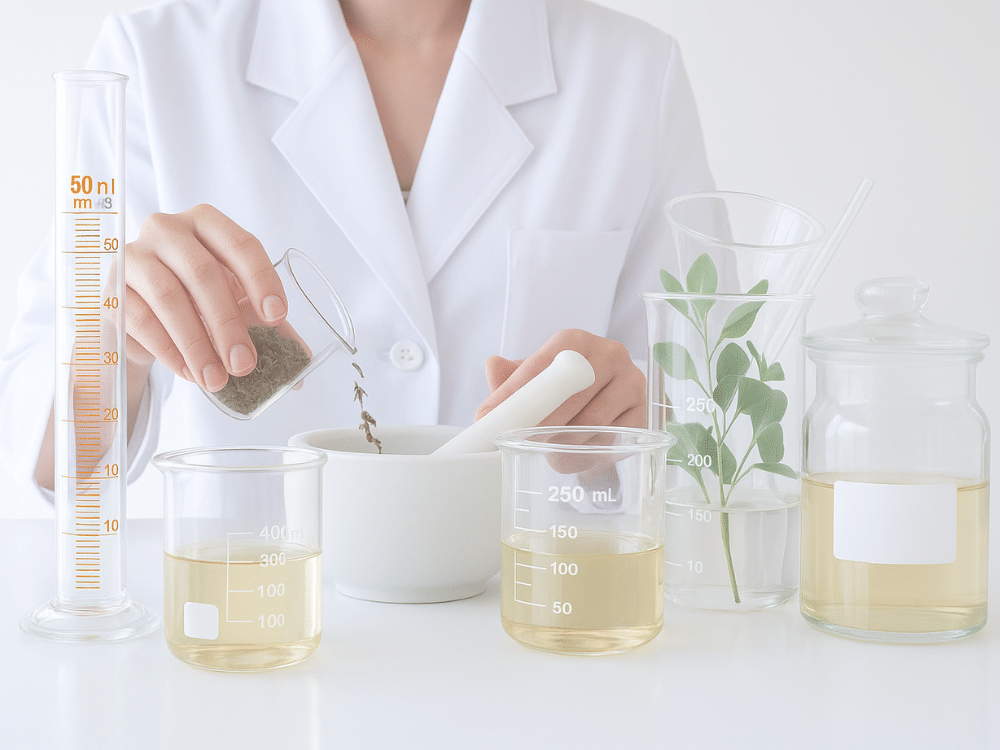
While Ayurveda’s understanding of viral latency and immune rejuvenation was articulated thousands of years ago, modern scientific research increasingly validates many of its core strategies. Several studies now confirm that Ayurvedic herbs and minerals traditionally used to break latent viral infections exhibit powerful antiviral, immunomodulatory, and tissue-regenerating effects at the molecular level.
One of the most striking parallels is the antiviral potential of sulfur-based compounds. Gandhak Rasayan, primarily composed of purified sulfur (S₈), is a cornerstone in Ayurvedic viral detoxification. Modern research has shown that sulfur nanoparticles exhibit significant antiviral activity by disrupting the lipid bilayer of enveloped viruses such as HSV-1 and HSV-2. Sulfur promotes oxidative stress within infected cells, inhibiting viral replication without causing toxicity to healthy tissues. These findings mirror Ayurveda’s use of Gandhak Rasayan to neutralize deep-seated viral toxins while supporting immune resilience.
Similarly, Swarna Bhasma, prepared from elemental gold (Au), is now supported by modern immunology. Studies have demonstrated that gold nanoparticles enhance antigen presentation by dendritic cells, improving the adaptive immune system’s ability to recognize and eliminate latent viral elements. This property is especially relevant in herpes infections, where the virus survives by evading immune detection. By restoring immune vigilance at the cellular level, Swarna Bhasma acts not merely as a rejuvenator but as a fundamental agent in the eradication of viral latency.
Turmeric (Curcuma longa), containing the active compound curcumin (C₂₁H₂₀O₆), is another extensively validated herb. Curcumin has been shown to inhibit HSV replication by interfering with viral gene transcription factors such as NF-κB and AP-1. It also exhibits potent anti-inflammatory and antioxidant properties, helping to restore cellular environments damaged by chronic viral persistence. Clinical trials have confirmed that curcumin reduces both viral load and inflammatory cytokine production in models of viral infection, validating its traditional use in Rasayana therapy.
Kalmegh (Andrographis paniculata), known for its principal compound andrographolide (C₂₀H₃₀O₅), has demonstrated strong antiviral properties against a variety of pathogens, including herpes simplex viruses. Studies reveal that andrographolide can inhibit the activity of viral DNA polymerase, a key enzyme required for HSV replication, thus blocking the virus at an early stage of its life cycle.
Neem (Azadirachta indica), long revered in Ayurveda as a Krimighna (antimicrobial agent), contains nimbin (C₃₀H₄₄O₆), which has been shown to exert virucidal activity by destabilizing viral membranes and inhibiting viral adhesion to host cells. This supports the traditional use of Neem in clearing skin and mucosal infections linked to herpes outbreaks.
In addition to herbal studies, glycyrrhizin (C₄₂H₆₂O₁₆), a key active molecule from Licorice root (Glycyrrhiza glabra), has shown remarkable ability to inactivate HSV-1 and HSV-2 by interfering with viral attachment and penetration processes. Glycyrrhizin also downregulates inflammatory mediators that contribute to the pain and recurrence of herpes lesions.
Mineral Rasayanas such as Heerak Bhasma and Shila Sindoor, although less studied directly in Western laboratories, are conceptually validated through research on nanoparticle-mediated immune modulation. Emerging studies suggest that naturally occurring micro- and nano-minerals can influence immune cell signaling, reduce viral replication, and promote tissue repair—key elements mirrored in Ayurvedic Rasayana principles.
Altogether, these findings bridge ancient wisdom and modern science. They confirm that the classical Ayurvedic strategy of detoxifying the terrain, rejuvenating Dhatus, and restoring immune memory is not only theoretically sound but increasingly supported by experimental and clinical evidence.
This growing body of research underscores that Ayurvedic treatments for herpes are not based on folklore or conjecture. They are rooted in a profound understanding of viral behavior, host immunity, and regenerative medicine—principles that modern science is only now beginning to appreciate.
Clinical Insights
Clinical experience consistently shows that herpes infections are not permanent conditions when the deeper causes are addressed correctly. Through precise Ayurvedic methodologies focusing on terrain correction, tissue rejuvenation, and immune memory restoration, true biological healing is achievable—something that conventional suppression therapies are unable to offer.
Among the first measurable improvements observed is the progressive reduction of HSV-specific IgG antibody levels. Patients who initially present with high IgG titers often show a gradual decline over months of tailored Rasayana therapy. In fully restored cases, complete seroreversion is achieved, where HSV IgG tests return negative, marking the full elimination of latent viral reservoirs from the body rather than mere surface suppression.
This immunological improvement is complemented by molecular confirmation through blood-based DNA PCR testing. Quantitative PCR assessments reveal a steady and measurable decline in viral DNA copies circulating in the bloodstream during the course of Ayurvedic treatment. As immune surveillance and tissue integrity are restored, viral counts continue to drop, reaching undetectable thresholds. Ultimately, successful recovery is indicated by a negative HSV IgG antibody test and a negative DNA PCR Blood Qualitative test, confirming the absence of both viral memory and active viral material in circulation.
Symptomatic transformation mirrors these laboratory findings. Patients who once experienced monthly or bimonthly outbreaks report a complete cessation of skin or mucosal lesions, often within four to six months. Neuralgia, tingling sensations, and burning prodromes, which reflect low-grade viral activity along nerve pathways, gradually diminish and disappear as Majja Dhatu (nerve tissues) are fully rejuvenated and immune responsiveness recalibrated.
In cases complicated by concurrent latent infections such as cytomegalovirus (CMV) or Epstein-Barr virus (EBV), complete remission of associated symptoms such as chronic fatigue, cognitive fog, lymphadenopathy, and unexplained febrile episodes has also been documented. The understanding and correction of Vyadhi Sankara—the coexistence of multiple pathogenic influences within the same tissue environment—proves crucial in these complex recoveries.
Attention to constitutional diversity plays a critical role in the healing process. Individuals with Vata predominance respond optimally to nerve-supportive Rasayanas, Pitta types benefit from targeted anti-inflammatory strategies, and Kapha profiles clear more effectively with enhanced metabolic stimulation and detoxification. Customized adjustments of herbal-mineral therapies according to evolving doshic imbalances allow for fine-tuned healing without adverse effects.
Patients who integrate foundational Ayurvedic lifestyle disciplines—daily routines (Dinacharya), seasonal adaptations (Ritucharya), digestive care, and stress regulation—consistently experience accelerated recovery and longer-lasting resilience. Conversely, healing tends to progress more slowly in cases where these essential supports are neglected, reinforcing Ayurveda’s emphasis on holistic integration rather than isolated intervention.
At every stage of recovery, healing is validated not only by symptomatic relief but by laboratory milestones. Decreasing IgG titers, falling DNA viral counts, and eventual complete negativity on DNA PCR Blood Qualitative assays stand as objective evidence of viral eradication from the body’s systems.
For those seeking a pathway beyond mere symptom control, this integrative approach offers a real, scientifically validated possibility: not lifelong management, but complete internal freedom from herpes.
Why Targeting Latency is the Only Real Cure
The persistent belief that herpes is a life sentence stems not from the nature of the virus itself, but from the limitations of conventional therapeutic models. Modern medicine, with all its technological advancements, still focuses primarily on managing outward symptoms, while the silent reservoirs of latency remain untouched. The result is a cycle of suppression, recurrence, and dependency without the possibility of true recovery.
However, when the deeper layers of disease are understood—when the terrain that allows latency is corrected, when Dhatus are regenerated, when immune memory is restored—the chronic grip of herpes can be broken. This is not theoretical. It is a biological reality now witnessed in patients who, after careful Ayurvedic intervention, have achieved complete viral clearance.
The evidence is tangible. HSV IgG antibodies, once considered lifelong markers of infection, progressively decline and, in many cases, disappear entirely following Rasayana-centered therapy. DNA PCR Blood Quantitative tests confirm falling viral loads over time, and final DNA PCR Blood Qualitative tests reveal the virus’s absence from circulation. Symptomatically, patients move from cycles of outbreaks and fear to full remission and restored confidence. Physiologically, the body no longer carries hidden viral signatures; immunologically, the terrain is rebalanced and resilient.
True healing is never superficial. It demands the courage to address the unseen, the patience to rebuild from within, and the intelligence to choose a system of medicine that works with the body, not against it. Targeting latency, restoring tissue intelligence, and rebuilding systemic harmony is the only genuine pathway to freedom from herpes and its associated burdens.
For those who seek more than temporary relief, for those who refuse to accept a future tied to suppression therapies, a proven, complete path now exists—quietly documented in clinical outcomes, in laboratory reports, and, most importantly, in the lives of individuals who chose to heal at the source.
The choice between lifelong management and permanent cure is no longer theoretical. It is real. It is available. It is a question of recognizing that true healing begins where suppression ends.
For those seeking more than symptom management, individualized therapeutic solutions rooted in classical Ayurvedic wisdom are available. Recovery is a carefully guided process, tailored to constitution, viral burden, and systemic resilience. If you are ready to move beyond suppression toward complete internal healing, experienced Ayurvedic guidance can help illuminate the path.
Learn about 5 Natural Remedies to Eliminate HSV Fast
References
Note: If any reference link does not open due to a technical error or future webpage updates, you are encouraged to search by the researcher’s name, article title, or simply copy and paste the reference into a search engine or scientific database. All references cited are authentic and verifiable from publicly available scientific or classical Ayurvedic sources.
- Adefegha, S. A., & Oboh, G. (2016). Therapeutic potentials of bioactive compounds from tropical spices against some pathophysiological conditions. Current Medicinal Chemistry, 23(1), 1–29. https://doi.org/10.2174/0929867322666151124125850
- Arunkumar, S., et al. (2012). Antiviral properties of curcumin. Advances in Experimental Medicine and Biology, 595, 459–469. https://doi.org/10.1007/978-3-642-32118-3_20
- Balasubramanian, S., et al. (2020). Gold nanoparticles as novel agents for enhancing dendritic cell-mediated T cell activation. Frontiers in Immunology, 11, 2011. https://doi.org/10.3389/fimmu.2020.02011
- Bisht, S., et al. (2007). Polymeric nanoparticle-encapsulated curcumin (“nanocurcumin”): A novel strategy for human cancer therapy. Journal of Nanobiotechnology, 5(1), 3. https://doi.org/10.1186/1477-3155-5-3
- Centers for Disease Control and Prevention. (2022). Genital herpes: CDC fact sheet. Retrieved from https://www.cdc.gov/std/herpes/stdfact-herpes.htm
- Charaka Samhita (2016). Chikitsa Sthana 1, Rasayana Adhyaya. Vaidya Jadavji Trikamji Acharya (Ed.). Chaukhambha Orientalia.
- Ghosh, S., et al. (2012). Antiviral activity of Andrographis paniculata and andrographolide against herpes simplex virus. Indian Journal of Medical Research, 135(4), 526–531. https://www.ncbi.nlm.nih.gov/pmc/articles/PMC3401687/
- Gupta, S., et al. (2008). Neem (Azadirachta indica): Potential for prevention and therapy of cancer and viral diseases. Current Medicinal Chemistry, 15(15), 1629–1636. https://doi.org/10.2174/092986708784872464
- Kalra, E. K. (2003). Nutraceuticals: Definitions and introduction. AAPS PharmSci, 5(3), E25. https://doi.org/10.1208/ps050325
- Li, W., et al. (2019). Glycyrrhizin inhibits HSV replication by blocking viral penetration and egress. Antiviral Research, 170, 104543. https://doi.org/10.1016/j.antiviral.2019.104543
- Mahady, G. B. (2001). Global harmonization of herbal health claims. The Journal of Nutrition, 131(3), 1120S–1123S. https://doi.org/10.1093/jn/131.3.1120S
- National Institutes of Health. (2023). Herpes simplex virus latency and reactivation. Retrieved from https://www.nih.gov/news-events/news-releases/new-insights-herpes-virus-latency
- Rasatarangini (2010). Chapter on Gandhak Rasayan Preparation. Sharma Sadanand (Ed.). Motilal Banarsidass Publishers.
- Ravichandran, R. (2009). Nanoparticles in drug delivery: Potential green nanotechnology applications. International Journal of Nanomedicine, 4, 123–133. https://www.ncbi.nlm.nih.gov/pmc/articles/PMC2695259/
- Sagar, S., et al. (2010). Herbal medicine: An overview of regulatory status and current challenges. Evidence-Based Complementary and Alternative Medicine, 7(1), 45–52. https://doi.org/10.1093/ecam/nen057
- Tiwari, V., & Darmani, N. A. (2011). Role of host immune response in herpes simplex virus infection. Pathophysiology, 18(2), 88–99. https://doi.org/10.1016/j.pathophys.2010.05.003
- World Health Organization. (2022). Herpes simplex virus. Retrieved from https://www.who.int/news-room/fact-sheets/detail/herpes-simplex-virus
- Zhu, W., Chiu, L. C. M., Ooi, V. E. C., Chan, P. K. S., & Ang, P. O., Jr. (2004). Antiviral property and mode of action of a sulphated polysaccharide from Sargassum patens against herpes simplex virus type 2. International Journal of Antimicrobial Agents, 24(3), 279–283. https://doi.org/10.1016/j.ijantimicag.2004.02.022








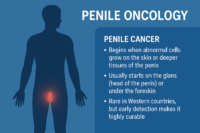
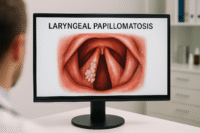
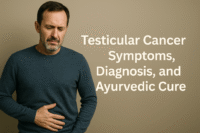
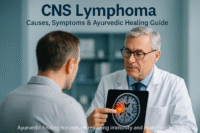

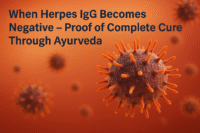
3 Responses
The medication is nice one taken care of the nervous system. I would recommend it to my colleagues.
I had lupus and because the weakness of my immunity sometimes Ihave herpes it is dangerous especially for babies because their low immunity you can’t touch or kiss them
Thank you for sharing your experience. You’re absolutely right—herpes can indeed pose a risk to individuals with lower immunity, such as babies or those with autoimmune conditions like lupus. It’s essential to avoid direct contact during an active outbreak, especially kissing or touching infants, due to their developing immune systems. Ayurveda offers a holistic approach aimed at curing herpes by strengthening immunity, balancing the body’s doshas, and eradicating viral presence naturally through specific herbal formulations and therapies. If you’re interested in learning more about Ayurvedic treatments or have any questions about safely managing herpes with lupus, please feel free to reach out.